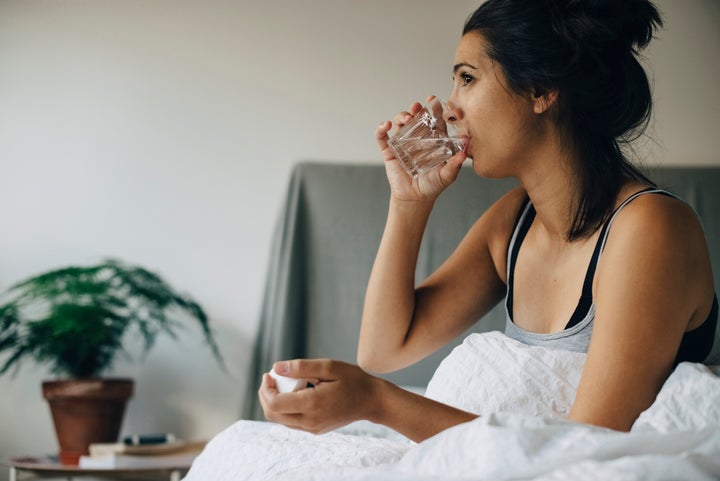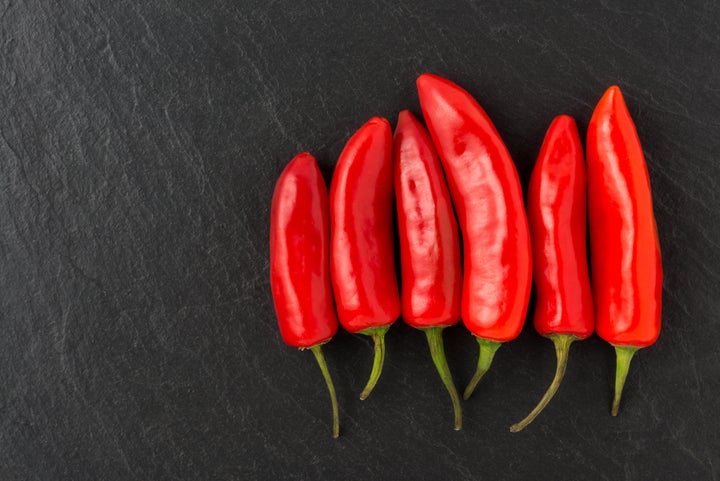Despite how important it is to stay hydrated, there are many things that keep us from drinking enough water ― busy schedules, things we’d rather be drinking (especially coffee and cocktails), and the belief that drinking more water will lead to spending half the day in a bathroom stall.
We feel you. But it’s also necessary to drink up. Fortunately for all of us, there are more ways than ever to score enough H2O, and you don’t have to turn your life upside down to make them happen. Ahead, experts share their super-easy strategies for drinking more water:
1. Bookend each day with water
If your days are so hectic that stopping to drink water barely crosses your mind, try bookending each day with some H2O to take the pressure off, said North Carolina-based registered dietitian Autumn Ehsaei. Drinking a few cups in the morning and a few more once you’re off the clock guarantees that your body is getting a decent amount of water, and it brings you another step closer to reaching your ultimate hydration goals.
2. For every cup of coffee, drink one glass of water
“While coffee is a fluid, it’s not as hydrating or thirst-quenching as water for most of us,” Ehsaei said. If you’re already in the habit of drinking a few cups of coffee each day, following them up with a glass of water can easily improve your hydration status.
3. Add lots of ice to your drinks and smoothies
If you find water to be a yawn on its own, adding lots of ice to your go-to drinks and smoothies is an easy way to sneak in some hydration, said Maryann Walsh, a registered dietitian in Florida. Popping just four ice cubes into your glass adds roughly a half of a cup of water to your drink ― and your taste buds will barely notice.
4. Add more spice to your foods
Kicking things up a notch in the spice department ― say, by adding extra hot sauce or peppers to your meal ― is a really easy (and tasty) way to bump up your water intake. Most people drink (OK, chug) water to cool down their mouth after bites of spicy food and this can help fulfill your hydration goals in the process, said Kristen Smith, a registered dietitian based in Georgia.
5. Drink a full glass of water with every med or supplement
If you take medications or supplements, set a goal to wash them down with a full glass of water, Walsh said. Many meds and supplements are supposed to be taken a few hours apart for maximum efficacy, so this small change may increase your water intake quite a bit.
6. Invest in a smart water bottle
Tracking your water intake tends to get lost among all your other daily to-dos ― hence the popularity of smart water bottles, which do all of the tracking for you. A bottle like HydraCoach, DrinKup or Ozmo Active can help you calculate the approximate amount of water you should drink daily, send you reminders to drink up and track your data so that you can improve your hydration habits over time.
7. Drink from a straw
You’re more likely to swallow more at a time when you drink from a straw compared to when you sip directly from the bottle. Plus, drinking water from a straw makes it more accessible, said Kristen Kizer, a registered clinical dietitian at Houston Methodist Hospital in Texas. You’ll be more likely to sip on your water during a meeting if you have a straw, for example, and don’t have to reopen your bottle every time.
8. Use an app
There are tons of apps, such as Gulps, that can help you strengthen your water intake by sending reminders to your phone and providing a visual of how much you’ve had to drink so far, said Amanda Montalvo, a registered dietitian and functional nutrition practitioner from Kettlebell Kitchen. If gaming’s more your thing, Plant Nanny links your daily water consumption to keeping an adorable plant alive.
9. Measure ahead of time
If you’d rather go old-school with tracking your intake, start by estimating how much water you should be drinking every day (Montalvo recommends “a minimum of half your body weight in ounces”). Then fill a large bottle with that amount and make sure to finish it by the end of the day. If a large bottle is overwhelming or annoying to cart around with you, you can break up your intake into smaller water bottles to make it more manageable, Kizer said. Before bed, refill your bottles for the next day.
10. Drink in unconventional ways
If you find drinking water, well, boring, research suggests that switching up how you drink it can make it feel new again ― and thus, more enjoyable. Researchers from the University of Chicago and Ohio State University observed 300 study participants as they consumed water. They asked participants to come up with their own unconventional ways to consume water, and their answers ranged from drinking it out of a martini glass to drinking it from a spoon. The result? They ultimately enjoyed drinking water more than participants who drank it the “normal” way. So the next time you cringe at the thought of drinking water from a ho-hum cup, consider busting out a martini glass instead.
11. Get a refill as soon as it’s empty
Get up and refill your water bottle as soon as you empty it, Kizer said. This will ensure that you’re well-stocked once it’s time for your next sip session and eliminates any excuses you might make to not drink up again later.
12. Incorporate it into health goals that are important to you
If drinking water for the sake of staying hydrated isn’t enough of a health incentive for you, try attaching the habit to other goals that are legit important to you. For example, drinking an 8-ounce glass of water before a meal may help aid digestion, while drinking water an hour after you consume your meal may help the body absorb the micronutrients, said Jacqueline Schaffer, M.D., author of Irresistible You.
13. Keep tabs on your bathroom habits
Figure out how long it takes before you have to use the bathroom after you drink water or other fluids. “For people with long commutes or worries about disrupting sleep at night, this data can be very helpful,” Kizer said. Instead of avoiding fluids all afternoon and evening just in case, you can hydrate with ease, both at the office and at home, by learning the cut-off times that work best for your body.




